
|   |

|   |
Dance festival portrays social themes - Vijay Shanker e-mail: shankercsn@gmail.com Photos courtesy: Pulikeshi Kasthuri February 10, 2020 Shantala Arts Trust (Bangalore) and Soorya Performing Arts (St Louis. USA) organised the five days Bengaluru International Dance Festival at Sevasadan auditorium, Bangalore, from 29th December to 2nd January. It was interesting to note as to how the festival showcased socially relevant themes, which is relevant to contemporary society and also serves a social cause. Shantala Arts Trust was established in 1985 by Bharatanatyam exponents Prasanna Kasthuri and Pulikeshi Kasthuri. Over the years the two brothers have devoted their lives to the promotion and propagation of classical dance and music with several productions and disciples to their credit. The first two days featured dancers from Chennai, Pune, Kolkata and Hyderabad and the rest three days featured dancers from USA, Switzerland and Hong Kong The dancers featured in the first two days of the festival were Shweta Vivek, Malti Tulsiram, Sriradha and Gangadhar from Hyderabad who performed Kuchipudi. The international section of dancers commenced with the special group performance by Shantala Dance Ensemble followed with the bio-pic thematic Bharatanatyam performance by Samanvita, daughter and disciple of Prasanna Kasthuri from St Louis, USA. Incorporating a socially relevant theme wherein a casual labourer plants several banyan trees that completely changed the eco-system and the atmosphere of the environment with greenery around was scripted by Prasanna with lyrics in Kannada. Performed and enacted by slim and trim 17 year old Samanvita, who was attired in simple costume, she created a fine impact with her striking and simple movements that projected the growth of little plants into large banyan trees. In fact, Salu Marada Timakka, on whose bio-pic this presentation was based, won the Padmashri for her unique social contribution. 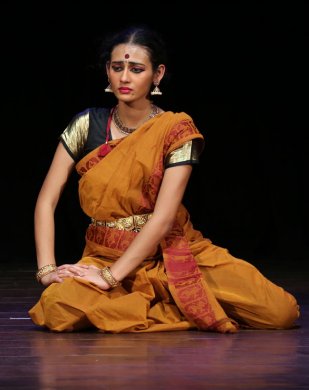 Samanvita Kasthuri 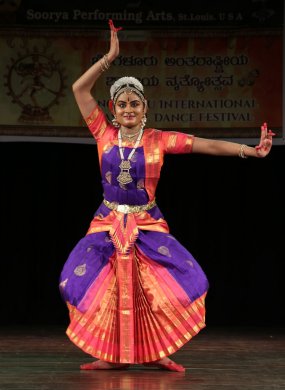 Seetha Vakalankha Seetha Vakalankha from USA commenced her Bharatanatyam performance with the Tanjore quartet composition "Manavi chekona," followed with Kanakadasa composition "Baro Krishnayya" that portrays Lord Krishna, while projecting varied aspects of his personality. After the light-hearted romantic Javali, Seetha impressed the audience with the precise execution of rhythmic patterns and stylized movements in Balamuralikrishna's Brindavana Thillana. Switzerland based Dasappa Keshava who has learnt Bharatanatyam in the Mysore Sampradaya, impressed the spectators with his powerful abhinaya, featuring the ferocious, virile and benevolent goddess in 'Durge.' The dramatic appeal of the tussle between the goddess and the demon was well executed with the fine application of musical instruments like the flute and mridangam. Keshava concluded his performance with the rendering of a Jayadeva ashtapadi. Although in his 70s, it was encouraging to see him perform in such a lively manner. Keshava has established his own dance academy in Switzerland and teaches both dance and Yoga. 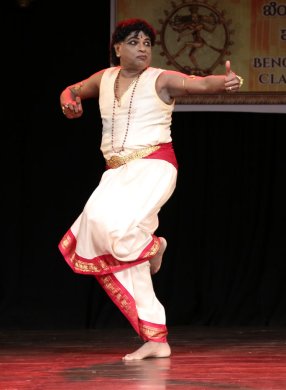 Dasappa Keshava 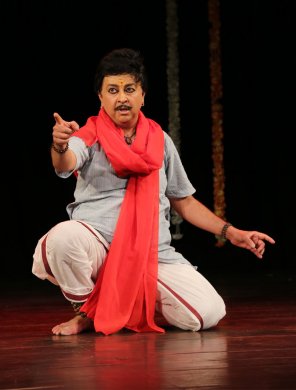 Prasanna Kasthuri One of the most impressive and thought-provoking performances of the festival, was the powerful rendering of the mountain man Dashrath Manji, who sacrificed his life for the betterment of the village folks, who had to walk several miles to go to the next village, as the mountain was a hurdle in between. With lot of pain, suffering and sheer determination, Dashrath practically destroyed the mountain. The narration and lyrics in Kannada, scripted and enacted by Prasanna, succeeds in revealing the intense suffering in his life, the death of his wife and the physical and mental pain Dashrath had to go through. During scene changes, Prasanna would change clothes on the stage itself; it looked odd but suited the theme as Dashrath was no super hero but an ordinary labourer who created history with sheer will power. Such socially relevant themes could serve as a social corrective with a moral message and classical dance and music is a fine medium to reach out to a larger section of the society. Rasika Rajagopalan who is based in Hong Kong created a fine impression with her powerful performance, refined movements and subtle expressions. Pertaining to the philosophy of the non-dual aspect of life, the rendering of 'Amma' incorporating the universal mother, was the piece-de-resistance of the evening. In the padam "Theruvil varano," the heroine asks the lord, 'While you are moving in the procession, will you pass my street, will you see me or would you ignore me?' Rasika, a disciple of Ranjani Ganesan, created a lasting impression with her complete involvement. 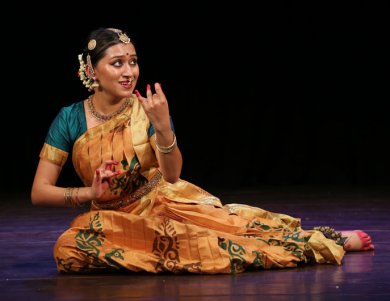 Rasika Rajagopalan  Anupama Mangalvedhe Anupama Mangalvedhe from Chicago was the last performer of the festival. Anupama rendered a pleasing Bharatanatyam performance. She was impressive in the number pertaining to the life of Lord Rama. Her enactment of the Jatayu scene and the sincere devotion of Shabari was well interpreted with fine abhinaya. The cosmic dance of Lord Shiva was executed with precise and striking movements in "Bho Shambho." It was indeed a fine festival of NRI dancers. 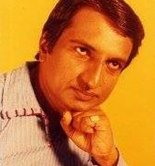 Vijay Shanker is a Kuchipudi and Kathakali exponent, teacher, bilingual journalist, arts critic and actor. |